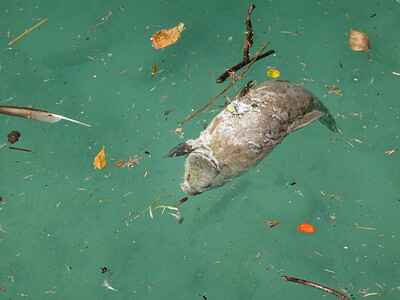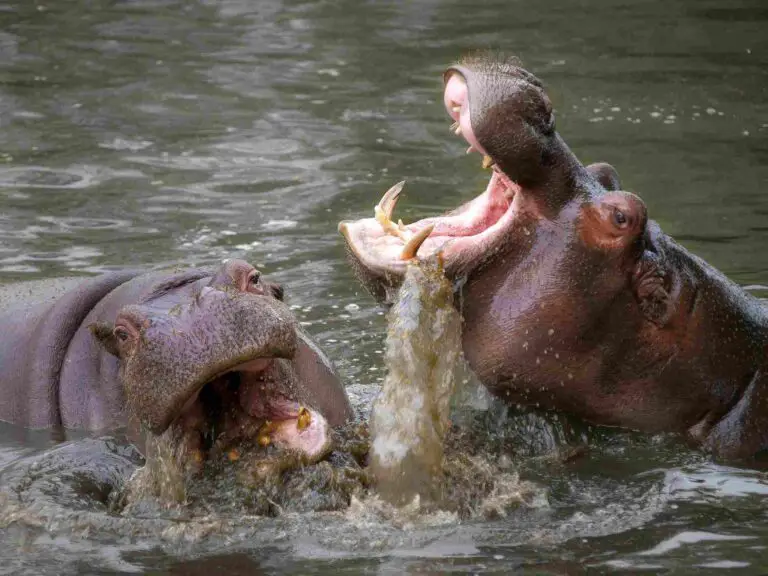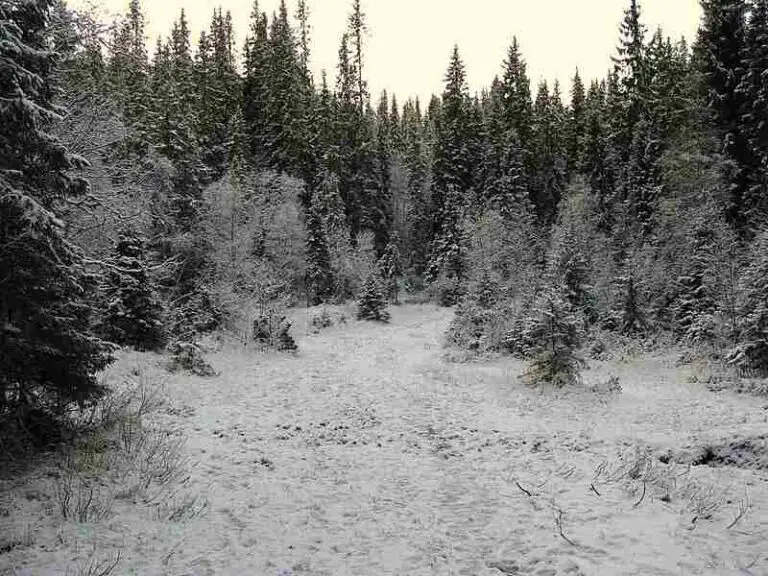Water Pollution Definition and Examples Explained
Water pollution is an act, process or condition of acute decline in the quality, safety and usability of water resources. This article discusses water pollution definition and examples, as outlined below;
-Water Pollution Definition: 7 Ways to Define Water Pollution
-Examples of Pollutants Found in Water
Water Pollution Definition: 7 Ways to Define Water Pollution
Water pollution is a form of degradation that occurs when harmful materials are introduced in significant quantity, into water reserves or aquatic ecosystems, thereby rendering them unsafe and unclean.
The above is a most basic definition of water pollution, which highlights its nature as a form of degradation, and its effect on affected water systems.
More insight into the nature of water pollution can be derived by observing the classification methods, and types of water pollution. This is done in the alternative water pollution definition below;
Water pollution refers to any process by which the quality of water declines significantly, and can be classified as any of various types including; chemical pollution (including agricultural, industrial, radioactive), organic pollution (including microbial, sewage, oil spill), thermal pollution, groundwater pollution, and surface water-pollution.
Definitions so far have made reference to harmful materials being 'introduced' into water to cause its decline in quality. This implies there are identifiable causes of water pollution.
Some of them (causes) are mentioned in the alternative water pollution definition below;
Water pollution is the act, process or phenomenon whereby water acquires significant concentration of foreign, toxic materials, which could be caused by; cargo-oil spillage, poor waste management, unsustainable agriculture, submarine pipe leakage, and polluted stormwater runoff.
Next, effects of water pollution are used as a central theme in the water pollution definition;
Water pollution is any notable decline in water quality caused by the presence of harmful toxins, with effects such as: water scarcity, economic loss, food chain disruption, loss of aquatic life, and human illnesses like diarrhea, typhoid and cholera [2].

Another important factor in the assessment of water pollution as a concept, is its sources. The sources of water pollution differ from its causes by involving an already potent, polluted system that extends its influence into natural or artificial water bodies.
On the other hand, causes of pollution are often developmental processes involving the entry of polluted media or materials into water, and leading to progressive degradation.
In the water pollution definition below, some potential sources of water pollution are listed;
Water pollution is an event in the course of which an originally-clean body or mass of water loses its quality and acquires a degraded state from any of various sources like; chemical industries, wastewater treatment plants, sewage management systems, oil vessels, and agricultural lands.
More clarity regarding water pollution can be provided on a realistic basis, by highlighting some examples of water pollution. This is done below, in get another alternative water pollution definition;
Water pollution is progressive and significant decline in water quality that is caused by foreign toxic materials, as can be observed in examples such as; urban stormwater-flooding of aquatic ecosystems, untreated effluent-marine discharge, groundwater degradation by landfill leachate, plastic pollution of marine ecosystem, eutrophication by chemical fertilizer-runoff, unsustainable nuclear waste heat-dissipation, and maritime oil tank-leakage.
Lastly, some solutions to water pollution are listed within the context of water pollution definition;
Water pollution is the acute loss of quality of water in natural and artificial systems due to human influence, which can be addressed using potential solutions like; pre-discharge treatment of effluent, effective water conservation planning (including flood and marine pollution control) remediation of polluter water, sustainable agricultural practices, and clean energy development.
Examples of Pollutants Found in Water
Examples of pollutants found in water are; heavy metals like arsenic, mercury, copper zinc, barium and lead; pesticides; herbicides; volatile organic compounds (VOCs); chemical fertilizer; biomass (including fecal matter) and pathogenic microbes like bacteria (including E. coli) and virus [4].
The table below summarizes the examples of pollutants found in water alongside their source(s), category/type, and effects;
Water Pollutant | Source(s) | Category(s) | Effects |
Heavy Metals | Industries, Municipal Waste | Chemical (industrial) | Aquatic organism-toxification Cancer risk and severity exacerbation [3] Organ disfunction including liver, kidney and lung |
Pesticides | Industries, Domestic Buildings, Commercial Facilities | Chemical (industrial, domestic, agricultural) | Groundwater degradation by leaching Loss of aquatic life Ill-health symptoms including nasal irritation, dizziness, nausea, headaches, itching, salivation, diarrhea, poor vision Acute poisoning and death |
Herbicides | Industries, Agricultural Lands | Chemical (agricultural) | Groundwater degradation by leaching Decline in aquatic productivity Ill-health symptoms including nasal irritation, dizziness, nausea, headaches, itching, salivation, diarrhea, poor vision Acute poisoning and death |
Volatile Organic Compounds (VOCs) | Industries (petroleum, cleaning agent, paint manufacturing) | Chemical (industrial) | Increased cancer risk Immunity decline Optical, nasal, throat irritation Other ill-health symptoms like; headache and nausea |
Chemical Fertilizer | Industries, Agricultural Lands | Chemical (agricultural) | Economic loss Excessive algal growth (eutrophication) [1] Low aquatic survival rate |
Biomass | Metabolic Processes, Waste Facilities | Organic | Microbial growth Decomposition and fouling Eutrophication Loss of potability |
Pathogenic Microbes | Fecal Matter, other forms of Biomass, Colonized Media | Organic (microbial) | Ill-health symptoms including; diarrhea, cramps, headache, nausea, vomiting, fatigue and fever Fatal cases may cause death |
Conclusion
Water pollution is a general term used to describe acute degradation of water resources, that may or may not be reversible. The definition of water pollution can be outlined based on factors like its causes, effects, sources, types and examples.
Examples of pollutants found in water are;
1. Heavy metals (like arsenic, mercury, copper zinc, barium and lead)
2. Pesticides
3. Herbicides
4. Volatile organic compounds (VOCs)
5. Chemical fertilizer
6. Biomass (including fecal matter)
7. Pathogenic microbes (like bacteria and virus)
References
1). Lee, G. F.; Jones-Lee, A. (2005). "Eutrophication (Excessive Fertilization)." Water Encyclopedia. Available at: https://doi.org/10.1002/047147844X.sw1606. (Accessed 25 April 2023).
2). Singh, R.; Andaluri, G.; Pandey, V. C. (2022). "Cities’ water pollution—Challenges and controls." Algae and Aquatic Macrophytes in Cities (pp.3-22). Available at: https://doi.org/10.1016/B978-0-12-824270-4.00015-8. (Accessed 25 April 2023).
3). Yang, B.; Yang, H.; Zhang, C.; Wang, Y. (2021). "Risk Assessment and Countermeasures of Heavy Metals in Drinking Water Environment of Guizhou Province." E3S Web of Conferences 245, 02012 (2021). Available at: https://doi.org/10.1051/e3sconf/202124502012. (Accessed 25 April 2023).
4). Zulkifli, S. N.; Rahim, H. A.; Lau, W. J. (2018). "Detection of contaminants in water supply: A review on state-of-the-art monitoring technologies and their applications." Sens Actuators B Chem. 2018 Feb;255:2657-2689. Available at: https://doi.org/10.1016/j.snb.2017.09.078. (Accessed 25 April 2023).



